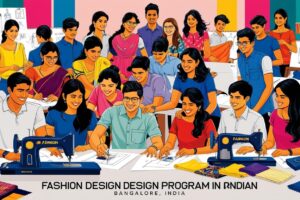
From Classroom to Career: Landing Your Dream Fashion Design Job
Transitioning from the classroom to a career in fashion design can be an exciting yet challenging journey. However, with the right approach and preparation, you can increase your chances of landing your dream job in the fashion industry. In this guide, we’ll explore essential steps and tips to help you navigate this transition successfully.
1. Build a Strong Portfolio
Your portfolio is your most important tool when applying for fashion design jobs. Include a variety of your best work, showcasing your skills in sketching, pattern-making, garment construction, and any other relevant areas. Tailor your portfolio to the specific job you’re applying for, highlighting your strengths and unique style.
2. Gain Practical Experience
Internships, part-time jobs, and freelance opportunities are valuable ways to gain practical experience in the fashion industry. Look for opportunities that align with your career goals and interests, and be proactive in seeking out these experiences to build your skills and network.
3. Network Within the Industry
Networking is crucial in the fashion industry. Attend industry events, fashion shows, and networking mixers to connect with professionals in the field. Join professional organizations and online communities to stay updated with industry trends and job opportunities.
4. Stay Updated with Industry Trends
The fashion industry is constantly evolving, so it’s essential to stay updated with the latest trends, technologies, and techniques. Follow fashion blogs, magazines, and influencers, and attend workshops and seminars to expand your knowledge and skills.
5. Prepare for Interviews
Prepare for fashion design job interviews by researching the company, practicing common interview questions, and showcasing your passion and enthusiasm for the industry. Be prepared to discuss your portfolio and previous work experiences, highlighting your achievements and contributions.
Conclusion
Transitioning from the classroom to a career in fashion design requires dedication, hard work, and strategic planning. By building a strong portfolio, gaining practical experience, networking within the industry, staying updated with industry trends, and preparing for interviews, you can increase your chances of landing your dream job in the fashion industry and starting a successful career in fashion design.
For further Inquires Contact Us
FAQs
How important is networking in transitioning to a fashion design career?
- Networking is crucial in the fashion industry as it allows you to connect with professionals, learn about job opportunities, and build relationships that can help advance your career.
What should I include in my fashion design portfolio?
- Your fashion design portfolio should include a variety of your best work, including sketches, illustrations, photos of garments you’ve designed or constructed, and any relevant projects or collaborations.
How can I gain practical experience in fashion design while still in school?
- Look for internships, part-time jobs, or freelance opportunities in the fashion industry. You can also participate in fashion design competitions, workshops, and industry events to gain experience and build your skills.
What are some common interview questions for fashion design jobs?
- Common interview questions for fashion design jobs may include discussing your design process, explaining your inspirations, showcasing your knowledge of current fashion trends, and describing your experience with different design techniques and materials.
How can I stand out in a competitive fashion design job market?
- To stand out in a competitive job market, focus on building a strong portfolio that showcases your unique style and skills, gaining practical experience through internships and freelance work, networking within the industry, and staying updated with industry trends and technologies.



